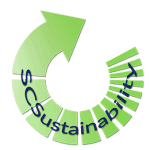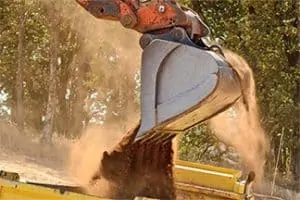

Marc J. Rogoff, Ph.D. and Laurel C. Ureña, M.S., explain the major cost categories and how they impact a specific cost analysis for a recycling program. The format uses examples to put the financial information into context for a Public Works Director or Project Manager to understand how cost analysis can help in determining the feasibility of a new or enhanced program.
The economic concept of the time value of money is an important one to understand because it allows the recycling coordinator or analyst to compare the feasibility of different solid waste program alternatives. Driven by interest and inflation, it boils down to one simple rule: a dollar invested tomorrow is worth less than a dollar received today.
Read the full article as published in the Florida APWA Reporter, June 2017 edition.
Read the Doing More with Less series of blogs, articles, and case studies of real solutions in an era of reduced budgets.
 Everyone knows about recycling, especially if you work at SCS. Many times, there are different ways that you can reuse those items for something else before, or instead of, getting rid of them. Today, we are sharing easy zero waste tips to repurpose items you have around your house, rather than just tossing them in the recycle bin:
Everyone knows about recycling, especially if you work at SCS. Many times, there are different ways that you can reuse those items for something else before, or instead of, getting rid of them. Today, we are sharing easy zero waste tips to repurpose items you have around your house, rather than just tossing them in the recycle bin:
Author: Jennifer Mancini

Circumstances sometimes dictate that a licensed landfill is your only option, but Wisconsin’s solid waste laws allow you to dispose of some types of contaminated soil at other locations if the soil qualifies as low risk. Alternative options are available through an exemption process outlined in Wisconsin Administrative Code Chapter NR 718.
Who Can Apply for an NR 718 Exemption?
Except for required actions when contamination is first discovered, the Wisconsin Department of Natural Resources (WDNR) must pre-approve exemptions.
Know the Rules Before You Apply
Additional information and answers to your compliance questions are available by contacting an SCS professional. In Wisconsin, contact Ray Tierney or Betty Socha. Are you ready to take control of your environmental compliance costs? Contact me or Betty Socha to learn more about how you can save money on soil disposal at your next project.
To learn more about compliance options for contaminated dirt disposal, remediation, and construction options in other states contact or visit the SCS website services page.
Related Services and Compliance:
Brownfields and Voluntary Remediation
Environmental Due Diligence and All Appropriate Inquiries

By using groundwater, you are able to maintain your business the way you’d like, and you shrink your water consumption footprint in the overall water resources of the state. You are conserving by using water that is available only to you — the groundwater beneath your property.
Using groundwater is a privilege that may allow you to reduce water supply costs and better meet water conservation goals while reducing strain on an already stressed resource. With privilege comes responsibility — to use the resource appropriately and carefully.
Chuck Houser works in the earth science industry. He is a registered geologist, certified engineering geologist, and certified hydrogeologist. His expertise includes environmental site assessments, groundwater monitoring, fault and landslide investigations, groundwater resource studies, geological mapping, and geotechnical investigations. Chucks scientific knowledge of geology and experience in the earth science industry for SCS Engineers enable him to prepare useful hydrogeological research, accurate environmental assessments, and environmentally appropriate remediation approaches.
This article may be of interest to managers of large tracts of land such as golf courses, parks, and recreation centers under a mandatory water conservation order and are unsure whether a facility can meet the cutback requirements and still maintain the property.
Jared Omernik suggests following five steps to prevent environmental contamination at mixing and loading pads, or mix/load pad for short. Follow Jared’s tips to achieve compliance, limit your environmental liability, and keep your operations running smoothly.
Read the article in the summer 2017 edition of the Wisconsin Agribusiness News Quarterly
Federal regulations require NPDES industrial stormwater Discharger to certify and submit via SMARTs an Annual Report on or before July 15th of each reporting year. Each facility should have already prepared the Annual Comprehensive Facility Compliance Evaluation (ACFCE). Per IGP Section XVI, the Discharger shall include in the Annual Report:
To learn more about filing, read the SCS Stormwater June Newsletter.
We hope that you find these tips helpful. If you have questions about sampling techniques, how to be prepared for storms, permitting, or anything else for compliance in California contact: Jonathan Meronek, , or your local office.
The Marine Corps Mud Run® took place last weekend at Camp Pendleton in support of Marine Corps Community Services (MCCS). Many SCSers took advantage of the opportunity to raise funds for MCCS, while simultaneously running and getting muddy!
Marine Corps Community Services (MCCS) programs are essential to meet the needs of Marines and other members of the Marine Corp family. MCCS programs encourage positive individual values, personal development, and provide for the physical, cultural, service and social needs that help sustain resiliency. We thank MCCS for their community services at Camp Pendleton and across our nation.
Semper fi.
In her latest article, Betsy Powers describes how industrial storm water permits are designed to protect the quality of surface waters, wetlands, and groundwater. She succinctly provides what you need to know to ensure your company complies with state and federal laws under the Tier 1 or Tier 2 General Permit for Storm Water Associated with Industrial Activity. Betsy answers these questions:
Betsy also sends you to the necessary documents for Wisconsin in her article. A quick read, packed with guidance and resources.
SCS Engineers provides these services nationwide. Contact and we’ll connect you with our professionals knowledgeable of your state requirements.
About the Author: Ms. Powers is a civil and environmental engineer with more than 16 years of consulting experience. She has consulted on diverse site development and environmental compliance projects and has helped clients work cooperatively with regulatory agencies and their constituents to successfully complete projects.
Today, most people have heard of the possible impact of ambient air quality issues such as smog, ozone, and air toxins. However, they are not aware of the potential dangers and health issues that can be a direct result of emissions in their home or office space.
According to the US EPA, indoor air quality (IAQ) problems are not limited to homes. In fact, many office buildings have significant air pollution sources. Some of these buildings may be inadequately ventilated. For example, mechanical ventilation systems may not be designed or operated to provide adequate amounts of outdoor air. People have less control over the indoor environment in their offices than they do in their homes. As a result, there has been an increase in the incidence of reported health problems.
Are employees missing more work days or have decreased productivity due to headaches or illness? It may be time to have the air quality in your home, or office building tested because getting air ducts cleaned or buying an air filter likely won’t solve the potential health problems. Professional indoor air investigations and chemical-specific sampling accomplish the following:
1. Determine possible pollutant sources and exposure pathways.
2. Measure the concentration of indoor air pollutants relative to greatest potential health threats at locations which there are known pollutant sources or exposure pathways.
3. Compare the measured concentrations of these pollutants to published threshold limit values (TLVs), permissible exposure limits (PELs), Ceiling Values (CVs), and recommended exposure limits (RELs).
4. Determine if the measured concentrations indicate the presence of a possible health hazard to employees, students, or occupants.
5. Provide recommendations for mediating any identified health hazards.
Homes and commercial buildings can be tested for numerous parameters including carbon dioxide, carbon monoxide, temperature, relative humidity, particulate matter, air toxins such as formaldehyde and volatile organic carbons, and bioaerosols (mold spores, pollen, insect parts, and skin cells) using specialized monitoring equipment.
Filter-based time-averaged samples are analyzed by an accredited laboratory and compared to recommendations set by the National Institute for Occupational Safety and Health (NIOSH), the American Society of Heating, Refrigeration, and Air Conditioning Engineers, the Environmental Protection Agency (EPA), National Ambient Air Quality Standard (NAAQS), and the Occupational Safety and Health Administration (OSHA).
Based on the air quality evaluation of your home or commercial building, an SCS scientist or engineer will provide you with recommendations for air quality improvement and remediation. If you suspect an indoor air quality problem, please contact one of our indoor air specialists like Katie Youngstrom and Paul Schafer, qualified professionals who will thoroughly inspect your indoor environment and determine if and where the pollution is originating along with the most efficient remediation actions.
About the Authors: Mr. Paul Schafer is a Vice President and Project Director at SCS Engineers, and our National Expert on Ambient Air Monitoring. During his technical career at SCS and SCS Tracer Environmental, Mr. Schafer has assumed key roles on several nationally significant monitoring efforts. Paul is also a Certified Indoor Environmental Consultant (CIEC) and has conducted multiple indoor air quality investigations.
Diane Samuels directs corporate communications at SCS and has expertise in medical and health communications; outreach strategies; and infographics.
Related services at SCS Engineers:
Risk Management Plans and Process Safety Management
Tom Rappolt, QEP, SCS National Expert on Odor Assessment presents to the Orange County Waste Management Commission today.
Mr. Rappolt was invited to speak based on his presentation at Waste Expo last month; proactively identifying and controlling odors from landfills. Every landfill with decaying waste will produce odors. In the past, this nuisance was considered something that could not be controlled, and most people learned to live with landfill smells. Tom Rappolt knows better; Tracer science, technology, and expertise can do more than cover or neutralize odors.
Orange County is known for taking preventative actions, rather than reacting, to environmental issues that could annoy citizens. Tom is briefing the commissioners on Tracer science and the methodology he uses to identify the source of odors and prevent them. He will step through the planning and implementation steps using specific case studies and examples to illustrate the processes and technology.
About Tom Rappolt and Tracer Science